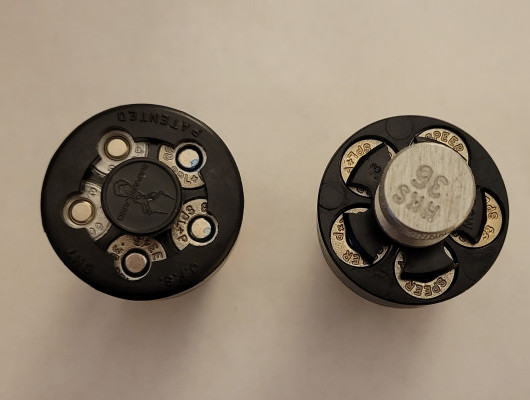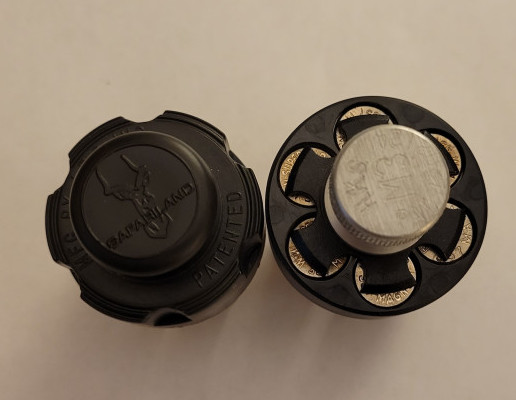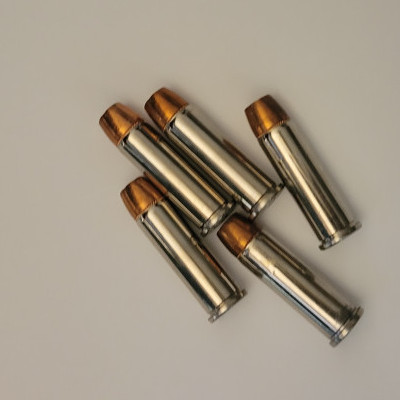Purchasing something using one of the links on this page could get me a commission. Won’t cost you a thing.
Table of Contents
Should you carry a revolver for defense at all?
First, I’m talking about a modern or semi-modern double-action revolver. Single-action isn’t really in my discussion, although if you’re willing to put in the training time I don’t see why one wouldn’t work. A .357 magnum out of a 6” barrel has exactly the same effectiveness whether a hammer was cocked by your thumb or by the trigger being pulled.
For me, however, one of the biggest advantages of the revolver is simplicity. As the bumper sticker says, “the original point and click interface.” I also find that revolvers simply “point” better than all autoloaders except the 1911. Whether you should be point shooting at all is up to you.
My J-frame is a constant companion. It’s often a backup (left-hand) gun in a pocket. If I’m going for a walk during rattlesnake season, which is most of the year in Arizona, it’s got a couple shotshells loaded for the first two trigger pulls and then three .38 +p hollow points. If I’m at home or doing normal, in town stuff, it has five JHP’s. Since they’re loaded into a speed loader changing loads is a simple matter. And I get practice reloading.
Disadvantages.
Revolvers have a couple disadvantages. The first is the double-action trigger. It’s long and heavy. At close ranges I don’t see this as a major problem but it could be as distances open up. For example, my 360-PD has a double action pull of 10 lbs, 15 oz. My Security Six is 9 lbs, 7 oz. I’ve practiced enough I don’t find that a major problem but if you’re not willing to put in the time it could be. The good news is that mastering a trigger pull is amenable to dry fire practice.
The second disadvantage is capacity.
How many rounds do I need?
The Cult of Capacity would have you believe that revolvers are hopelessly outdated due to the fact that they traditionally have only five or six rounds. Yes, there are seven and eight round revolvers out now and they’re huge. I’m not saying they can’t be concealed and carried daily; I am saying that it’s more difficult. I don’t have one and won’t be talking about them.
How many rounds are needed? I’ve no idea. Neither, as near as I can tell, does anyone else. There’s the old rule of threes: three rounds at three yards in three seconds. Is there any validity to that? All I can really say is that it sounds right to my ear. But maybe that’s why someone invented it: it sounds good and sticks in the brain.
There is this Greg Ellifritz study that covers handgun caliber “stopping power.” For the purposes of this discussion, I think the “average number of rounds until incapacitation,” is the important number. The study is pretty interesting overall so look around a bit while you’re there.
The highest numbers for standard calibers are for 9mm and 40 S&W; they’re both over two rounds per incident before the attacker is stopped. Are they ineffective? I don’t think that’s it. Or is it that people can fire them more rapidly than, say, the .357 magnum? I’m guessing the latter but draw your own conclusions.
The point is that the highest average number of rounds required to incapacitate someone was 2.45 rounds for 9mm; all other rounds he listed were under two rounds. So, on average, five or six rounds will probably be sufficient for one or two attackers. And one or two attackers will probably be all that you’re likely to face. Notice the liberal use of words like “average,” “probably,” and “likely” here. Most discussions about this contain those words a lot. Because no one knows. For example, there’s this guy: (link: https://truewestmagazine.com/cole-younger-never-got-the-lead-out/).
While one or two attackers is most likely maybe you’ll draw the short straw and get attacked by the angry basketball team. Five rounds could get a little dicey there. We’ve all seen videos online of multiple attackers fleeing at the first muzzle flash pointed their way. Is that typical? No idea but I think, “not getting shot today,” might be high on even the most violent criminal’s priority list.
Still, it seems like a good idea to have some reloads around.
Extra rounds.
So, reloading a revolver isn’t quite as simple as reloading an autoloader with ready magazines. There are four basic methods.
- Loose rounds.
- Speed strips.
- Speed loaders.
- Moon clips.
Loose rounds.
It works, but it’s easily the slowest and easiest to fumble on the list. You can either just have the rounds in a pocket or you can get something designed to either hold them on your belt or the loops are built in to the belt. Obviously, the belt loop method lets you carry a lot more rounds than a simple pouch but they’re exposed to the weather, too. If either the spare rounds are wet or cold that’s going to complicate things.
Speed strips.
Whoever put “speed” in the name of these has some imagination. For me they’re only technically faster than loose rounds. They do have one big advantage, though: they keep the rounds separate and all pointed the same way. And they are the most concealable option here. They can be dropped into a pocket and disappear. I make sure they’re in their own pocket so I don’t have to fumble for them.
You can also top off load with them, if you have the opportunity and the confidence that you can pull it off under stress. You’ve fired two or three rounds and have a moment. You can load one or two rounds at a time from the speed strip to fill your cylinder up without dropping unfired rounds on the ground. Although that does require you to make sure you only dump the spent ones and not the unfired rounds. That last would be counterproductive.
Finally, they’re available in up to eight round capacity. I have two of these. They hold six rounds. When I carry my J-frame which has five rounds I end up with a couple spares. Oh, well. I also have a Ruger Security Six and they work just fine for that. The important part is that they don’t have to “fit.” A speed strip is a speed strip; they work for all revolvers of the correct caliber.
Speed loaders.

Finally, something worthy of the word, “speed.” With practice these can be quite quick. There are quite a few different brands of speed loaders. In the mainstream, concealed carry realm there are two main types that I’ll identify by their main manufacturer: HKS and Safariland. The other brands are variations on these two themes. They both hold rounds in a cylindrical contraption sized the same as your revolver’s cylinder. Unlike the speed strips, you do need one for your particular gun. Kind of. There really aren’t that many chamber spacings for a six round .357. So each speed loader will work with multiple revolvers.
Amazon has both kinds available for reasonable prices: HKS. Safariland.
I found this table that lists the various revolvers that HKS speed loaders fit. It’s not comprehensive but a good start. I don’t see anything in there about Chiappa, for example, and the MK3-A size does fit at least some of the Rhinos.

The short version is that the HKS has a little knob you turn clockwise to release the rounds. I think they’re easier to load the rounds in to since you’re just putting them in then rotating counter-clockwise to grab the rounds.
The Safariland just works on pressure. Line up the cartridges and press the loader towards the cylinder. The mechanism will release from resistance against the ejector star. I find them slightly quicker but it’s not a big deal. It’s a bit more of a pain to load rounds into the loader. You put the rounds in then have to press and twist the knob at the back. It’s tricky at first but after some practice it’s quick. I have both types, which may not be a good idea. For muscle memory it might be best to pick a type and run with it.
Moon clips.
I honestly have zero experience with these but I thought I should mention them. Jerry Miculek seems to like them and I’m willing to take his word for it. However: they’re designed for semi-rimmed cartridges like the 9mm and .45 ACP. My revolvers are fully rimmed designs in .357/.38. The only way moon clips work there is if you have the cylinder machined for them. No, thanks. I’ll be fine with my speed loaders. And if I’m slower than Jerry Miculek, well, so is everyone else.
Conclusion.
So, what’s your final opinion? What you are comfortable with is the final arbiter. For me, I don’t carry the Security Six. Maybe if I get a good holster for it some day but I’m fine with my autoloaders for daily carry.
As I said, though my J-frame is easily my most carried gun. Honestly I bought the Security Six because I got a decent deal and there was a hole in my line-up. I had a snub nose .357 and a lever action .357, so…
Some day I’ll get a reasonably priced shoulder holster for it so that I can carry it while driving. Once that happens I expect to be carrying it more often and I will feel completely confident while doing so.


